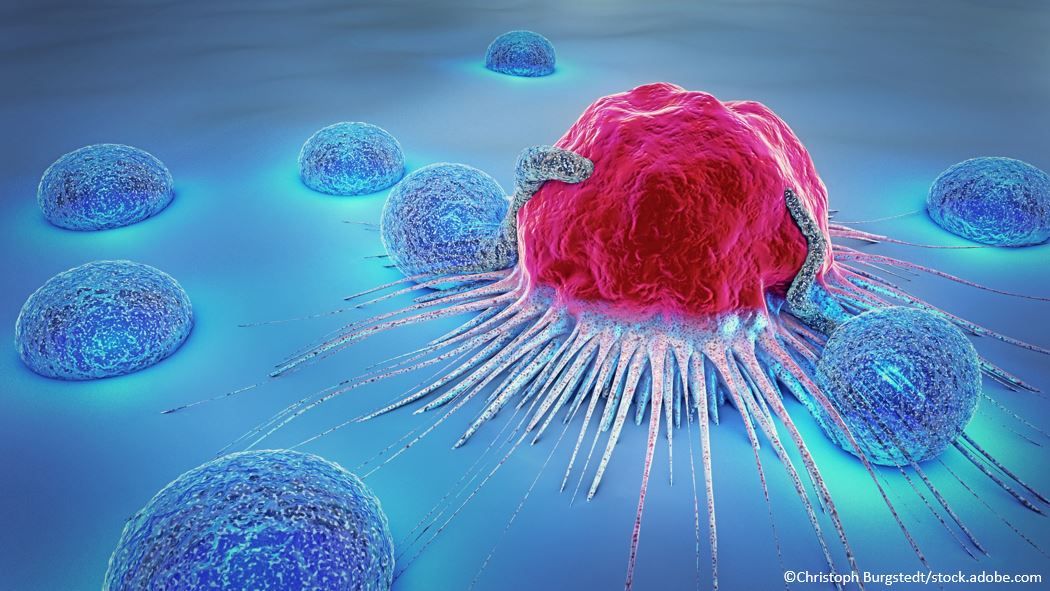
- Clinical Technology
- Adult Immunization
- Hepatology
- Pediatric Immunization
- Screening
- Psychiatry
- Allergy
- Women's Health
- Cardiology
- Pediatrics
- Dermatology
- Endocrinology
- Pain Management
- Gastroenterology
- Infectious Disease
- Obesity Medicine
- Rheumatology
- Nephrology
- Neurology
- Pulmonology
GLP-1RAs Linked to Decreased Risk of Some Obesity-Related Cancers in Patients with T2D
GLP-1RAs were associated with a significantly reduced risk of obesity-associated cancers including gallbladder cancer, pancreatic cancer, and meningioma.

Individuals with type 2 diabetes (T2D) who used a glucagon-like peptide 1 receptor agonist (GLP-1 RA) had a lower risk for 10 out of 13 types of obesity-associated cancer (OAC) compared with those who used insulin, according to new data published in JAMA Network Open.
In a cohort study of more than 1.6 million persons with T2D who had no history of any OAC, researchers reported that compared with insulin, those who received GLP-1RA treatment had significantly reduced risks of:
- Gallbladder cancer (HR 0.35, 95% CI 0.15-0.83)
- Meningioma (HR 0.37, 95% CI 0.18-0.74)
- Pancreatic cancer (HR 0.41, 95% CI 0.33-0.50)
- Hepatocellular carcinoma (HR 0.47, 95% CI 0.36-0.61)
- Ovarian cancer (HR 0.52, 95% CI 0.03-0.74)
- Colorectal cancer (HR 0.54, 95% CI 0.46-0.64)
- Multiple myeloma (HR 0.59, 95% CI 0.44-0.77)
- Esophageal cancer (HR 0.60, 95% CI 0.42-0.86)
- Endometrial cancer (HR 0.74, 95% CI 0.60-0.91)
- Kidney cancer (HR 0.76, 95% CI 0.64-0.91)
Researchers reported that use of the drug class was associated with a lower risk of stomach cancer compared with insulin use, although it did not reach statistical significance (HR 0.73, 95% CI 0.51-1.03). Of note, the team also found that GLP-1RA use was not associated with a reduced risk of postmenopausal breast cancer (HR 1.07, 95% CI 0.93-1.23) or of thyroid cancer (HR 0.99, 95% CI 0.79-1.24).
Compared with metformin, GLP-1RA therapy was not associated with a decreased risk of any cancers but wasassociated with an increased risk of kidney cancer (HR 1.54, 95% CI 1.27-1.87), investigators added.
“These findings provide preliminary evidence of the potential benefit of GLP-1RAs for cancer prevention in high-risk populations and support further preclinical and clinical studies for the prevention of certain OACs,” corresponding author Nathan Berger, MD, of Case Western Reserve University School of Medicine, Cleveland, Ohio, and colleagues wrote in the study published online July 5, 2024.
According to Berger and coauthors, 13 human malignant neoplasms have been identified as OACs. GLP-1RAs have been shown to be effective for the treatment of T2D and obesity, however, the association of this class of pharmaceuticals with the incident risk of those 13 OACs is unclear. To explore further, researchers conducted a retrospective cohort study of deidentified electronic health records on the TriNetX platform.
A total of 1 651 452 participants (mean age, 59.8 years; 50.1% men) with T2D and no prior diagnosis of OACs prescribed GLP-1RAs, insulin, or metformin between March 2005 and November 2018. The occurrence of first-time diagnoses for each of the 13 types of OACs was examined over a 15-year follow-up period after initial exposure. All models were adjusted for confounders at baseline, according to the study.
Among the study population, 60.6% were White, 17% were Black, 4% were Asian, 0.4% were American Indian or Alaska Native, and 0.8% were Native Hawaiian or other Pacific Islander.
Investigators noted that of the 10 OACs that showed a decreased risk among patients who received GLP-1RAs compared with those who received insulin, “HRs for patients taking GLP-1RAs vs those taking metformin for colorectal and gallbladder cancer were less than 1, but the risk reduction was not statistically significant.”
Berger and colleagues stated that further long-term studies are needed to assess the potential cancer-preventive effects of GLP-1RAs on OACs, along with research into newer and potentially more effective antidiabetic and weight loss medications, including those with multihormone agonist activities. Research on the preventive effects of GLP-1RAs on cancers not related to obesity is also warranted, they added.
“As noted previously, it will be important to correlate these associations with the control of T2D and obesity,” Berger et al concluded. “Moreover, given that T2D and overweight or obesity have negative impacts on patients during cancer therapy, GLP-1RAs should be evaluated for control of these comorbid conditions during cancer therapy as well as for secondary prevention to delay cancer recurrence.”
Reference: Wang L, Xu R, Kaelber DC, Berger NA. Glucagon-like peptide 1 receptor agonists and 13 obesity-associated cancers in patients with type 2 diabetes. JAMA Netw Open. Published online July 5, 2024. doi:10.1001/jamanetworkopen.2024.21305
2 Commerce Drive
Cranbury, NJ 08512
All rights reserved.